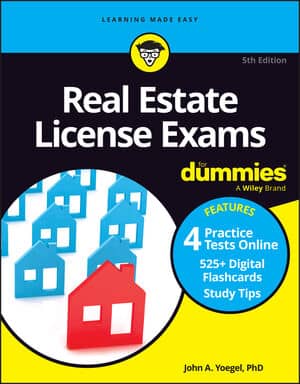Though different types of leases have common features and have the same minimum legal requirements, the Real Estate License examiners will expect you to know the different purposes they serve. Exam questions will likely focus on the major traits of various leases and may use short case studies to ask about types of leases used under certain circumstances.
Gross lease
A gross lease is where the tenant pays the same rent each month, and the landlord pays all the building’s expenses, such as maintenance and taxes. The landlord may also pay some or all of the utilities, but in some gross leases, a tenant may pay his own utilities. The typical apartment lease is a gross lease.
Ground or land lease
The ground lease or land lease is a lease where someone rents an empty (vacant) piece of land specifically to erect a building on it. These leases tend to be long term and often exceed 50 years or longer. This lease term allows the tenant time to make his investment in the building worthwhile. In a ground lease, the tenant owns the building and the landlord owns the land.
Ground leases usually require the tenant to pay all property expenses, such as taxes, utilities, and maintenance. In this respect, a ground or land lease is similar to a net lease.
Lease for oil or gas rights
Some leases give a company the right to search for and extract oil and gas from someone’s property. The tenant usually pays a fee for the lease and then additional money is paid by the holder of the lease rights to the property owner according to how much gas or oil is removed.
This type of lease is considered to be a limitation or cloud on the title to the property, which is anything that limits the rights you get when you buy a piece of property.
Net lease
A net lease is one where the tenant pays the building expenses on top of a base rent. Whether the tenant pays all or some of the expenses is negotiable. A triple net lease generally requires the tenant to pay all expenses such as taxes, utilities, maintenance, and insurance. The net or triple net lease is commonly used in renting commercial space.
You may want to check whether a double net lease (or a net net lease) is common in your area. In some markets, the tenant pays taxes and maintenance or taxes and utilities but not all the other expenses.
Percentage lease
A percentage lease usually has a minimum monthly rental charge plus a percentage of the gross earned by the business. This arrangement is sometimes used in leases with retail stores, and the percentage is based on gross sales. The percentage lease may be either a gross or net lease, meaning that the tenant pays none, some, or all of the building expenses.
Proprietary lease
A proprietary lease is a lease that is given to the “owner” of a cooperative apartment. The owner doesn’t actually own the apartment itself but rather shares in the corporation that owns the building. He receives a proprietary lease that allows him to occupy the apartment.

